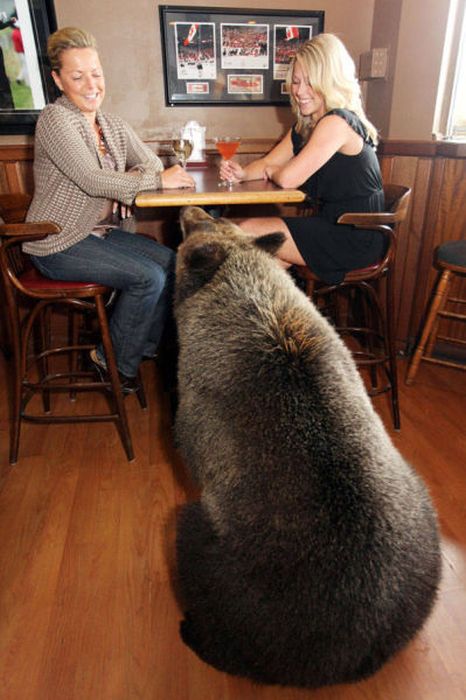|
|
Billy, Grizzly Bear Pet, Vancouver, British Columbia, Canada
|
Grizzlies are considered by some experts to be more aggressive than black bears when defending themselves and their offspring. Aggressive behavior in grizzly bears is favored by numerous selection variables. Unlike the smaller black bears, adult grizzlies are too large to escape danger by climbing trees, so they respond to danger by standing their ground and warding off their attackers. Increased aggressiveness also assists female grizzlies in better ensuring the survival of their young to reproductive age. Mothers defending their cubs are the most prone to attacking, being responsible for 70% of fatal injuries to humans. Historically, bears have competed with other large predators for food, which also favors increased aggression.
Grizzly bears normally avoid contact with people. In spite of their obvious physical advantages and many opportunities, they almost never view humans as prey; bears rarely actively hunt humans. Most grizzly bear attacks result from a bear that has been surprised at very close range, especially if it has a supply of food to protect, or female grizzlies protecting their offspring. In such situations, property may be damaged and the bear may physically harm the person.
Exacerbating this is the fact that intensive human use of grizzly habitat coincides with the seasonal movement of grizzly bears. An example of this spatiotemporal intersection occurs during the fall season: grizzly bears congregate near streams to feed on salmon when anglers are also intensively using the river. Some grizzly bears appear to have learned to home in on the sound of hunters' gunshots in late fall as a source of potential food, and inattentive hunters have been attacked by bears trying to appropriate their kills.
Increased human–bear interaction has created "problem bears", which are bears that have become adapted to human activities or habitat. Aversive conditioning, a method involving using deterrents such as rubber bullets, foul-tasting chemicals or acoustic devices to teach bears to associate humans with negative experiences, is ineffectual when bears have already learned to positively associate humans with food. Such bears are translocated or killed because they pose a threat to humans. The B.C. government kills approximately 50 problem bears each year and overall spends more than one million dollars annually to address bear complaints, relocate bears and kill them.
|
|









